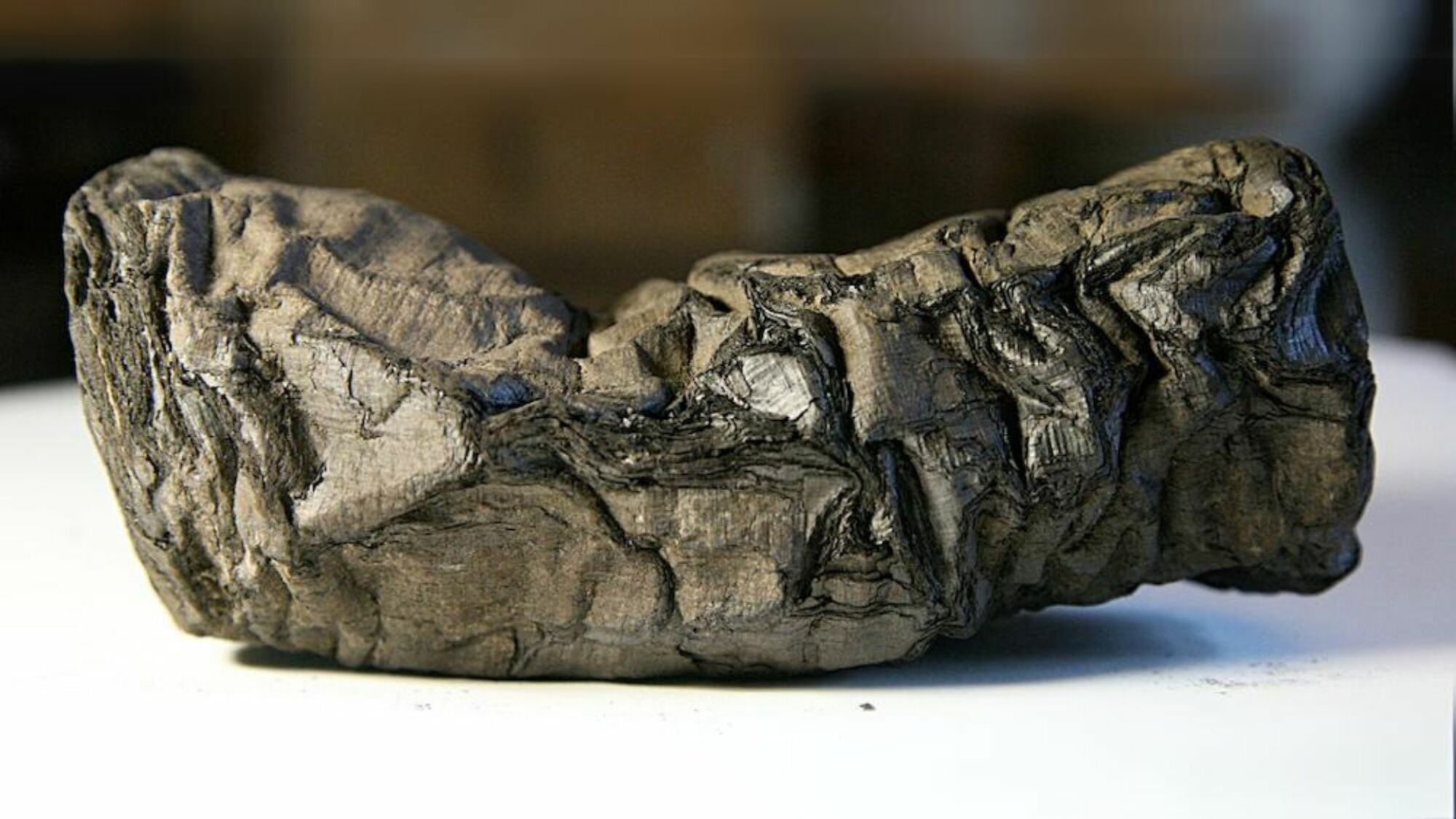The Herculaneum papyri, a set of parchments charred by the eruption of Vesuvius, are finally beginning to be deciphered thanks to an open source artificial intelligence project. This is an inspiring example of the potential of new technologies in fields such as archaeology.
After surviving the eruption of Mount Vesuvius in AD 79, the papyri were discovered accidentally by a worker drilling a well in the early 1700s. Since then, many attempts to decipher them have been complicated by the fragility of the parchments. , which crumble if you try to unroll them. Pieces containing traces of writing were until now considered illegible to the human eye. AI has just changed the game.
A competition for open source research
In 2015, researchers at the University of Kentucky, led by Dr. Brent Seales, used computer vision to virtually “open” the scrolls. Four years later, three-dimensional computed tomography, a technology also used to perform scans in modern medicine, made it possible to generate a complete virtual image of the papyri. Two entrepreneurs fascinated by this archaeological treasure, Nat Friedman and Daniel Gross, then decided to finance a competition called the Vesuvius Challenge to invite as many people as possible to participate in the research, which is carried out in open source.
“ By opening up the data and putting the right incentives in place, participants were able to explore many more ideas than a small team of academics could have done in the same amount of time », Comments JP Prosma, a spokesperson for the initiative. A winning bet, Luke Farritor, an American computer science student, has just read the first word of an unopened Herculaneum papyrus.
To achieve this, he relied on earlier discoveries of ink “cracking patterns” made by another candidate. He then trained a machine learning model to recognize the patterns, this data helped improve the model’s recognition capabilities. Eventually, the AI found a formation of letters that made up the Greek word “porphyras,” meaning “purple” in ancient writing. The student won $40,000.
An inestimable historical value
At the same time, another competitor and biorobotics student, Youssef Nader, received $10,000 for finding the similar word using another model. He has “ produces the clearest, most complete images of the inside of a roll to date “.
Using Farritor’s technique, the researchers hope to decipher others, which would amount to ” two or three dozen Iliads or Odysseys », Estimates JP Prosma. The 1,100 charred scrolls were found in the ruins of a building believed to have been the home of Julius Caesar’s father-in-law. It is likely that they contain texts by Philodemus, an Epicurean philosopher.
This is not the first time that AI has played a decisive role in an archaeological discovery. In 2021, researchers managed to automate the sorting and classification of pottery fragments discovered during excavations using this technology.
Sources: Mashable, CNN

5